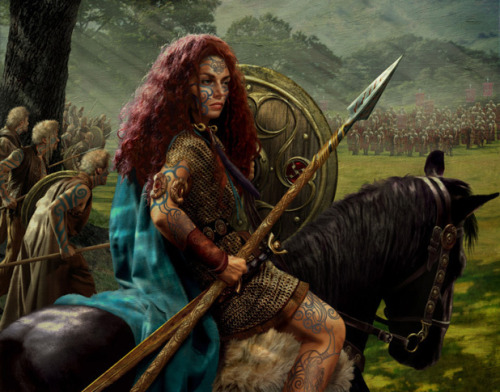#celtic briton history
Boudica
Warlord and queen of the British Iceni, an ancient Celtic tribe, Boudica led an uprising against the occupying forces of the Roman Empire. Boudica’s husband Prasutagus was ruler of the Iceni tribe, and enjoyed autonomy under a treaty with the Romans. However, when he died, the kingdom was annexed as if conquered. Boudica was flogged, her daughters were raped, and Roman financiers called in their loans. In AD 60 or 61, Boudica waited until the Roman governor Gaius Suetonius Paulinus was leading a campaign on the island of Anglesey off the northwest coast of Wales. She then launched a massive assault leading the Iceni, Trinovantes and other Britons in revolt against Roman population centers. She destroyed Camulodunum (modern Colchester), and while the out-manned Roman garrisons attempted to flee, Boudica’s army of 100,000 engaged the Legio IX Hispana, decimating them, then burned and destroyed Londinium, and Verulamium (modern-day St. Albans). An estimated 70,000–80,000 Romans and British were killed in the three cities by Boudica’s armies. Despite these early gains, Suetonius regrouped his forces in the West Midlands, and though heavily outnumbered, defeated Boudica’s advancing Britons in the Battle of Watling Street. The crisis caused the Emperor Nero to consider withdrawing all Roman forces from Britain, but Suetonius’s eventual victory over Boudica confirmed Roman control of the province. Boudica then killed herself so she would not be captured. She has since remained an important cultural symbol in the United Kingdom, and is renown for her tactical use of the chariot on the battlefield by employing shock-combat to break enemy formations.
Post link

